Lee Dorsey |
|
LEE DORSEY OVERVIEW: |
|
One of the most underrated and overlooked figures of his time, Lee Dorsey signaled dramatic change in rock music during a decade of hitmaking in the 1960's and remains widely revered among other artists even while his name to the average music fan today would barely register a glimmer of recognition. At once too popular during his heyday to be a cult figure, but not quite popular enough to be an immortal, too idiosyncratic to be copied, yet subversively influential all the same, Dorsey was rock 'n' roll's ultimate character actor - an instantly familiar voice to audiences, solidly professional in his work and always a welcome, if quirky, sight on the musical landscape.
It's amazing that Lee Dorsey ever was able to make an impact to begin with as he was unquestionably among the most unlikely rock stars to ever emerge in the early 60's. At a time when the prime audience for the music were teenagers and many of the performers were not much older than that themselves, Dorsey first broke through in 1961 at the comparatively advanced age of 36. Born Christmas Eve, 1924, Dorsey had already lived a full life outside of music by the time he scored his first hit. Drafted into the Navy during World War Two, Dorsey saw heavy action in the South Pacific as a gunner on a destroyer and was wounded when he took flak from a Japanese Zero in battle. Following his discharge he boxed professionally as a lightweight in the early 1950's under the name Kid Chocolate and upon retiring undefeated from the ring he started an auto body shop in New Orleans which remained his primary occupation for rest of his life. He began singing as a sideline for small labels in the late 50's and had a few local hits, most notably "Lottie Mo" in 1958, but it was not until he hooked up with pianist, producer and songwriter Allen Toussaint that Dorsey made the leap into the big time and in the process set the stage for a new wave of New Orleans rock 'n' roll.
On the surface his first hit, "Ya Ya", has the appearance of a novelty. Its nursery rhyme lyrics and sing-songy pace aren't surprising considering the idea came to Dorsey when he saw children in the neighborhood using similar gibberish phrases to keep time while skipping rope. But upon closer inspection one can easily see the seeds of the 60's funkier rhythms being sewn. Whatever the root source of its appeal audiences flipped for it and "Ya Ya" hit #1 on the R&B Charts in November 1961 and cracked the Pop Top Ten, reaching #7. Dorsey's gravelly croak of a voice was hypnotic and enchanting and a far cry from the type of smooth singing and orchestrated string laden tracks that otherwise were dominating the airwaves at the time. A follow-up, "Do-Re-Mi", another tune derived from childish nonsense, was a Top 30 hit early the next year and Dorsey subsequently went on an extended tour with James Brown. But then Toussaint was drafted into the Army and after cutting additional material for other labels that went nowhere Dorsey went back to the auto body business full-time, his singing career apparently over as suddenly as it had begun. At this point it appeared that Dorsey might become simply an odd footnote in rock history, a comparatively elder statesman like Buster Brown who'd recently scored big himself with "Fannie Mae" while pushing fifty years old but who then quickly faded away. In each case their hit songs would remain identifiable in the future but they'd never have a sustained career to show for it. In rock 'n' roll at the time this was a fairly common occurance regardless of the performer's age, a harsh truth in a business where today's star is tomorrow's nobody, and for Dorsey, whose early success had been improbable to begin with that was clearly shaping up to be the case. Three whole years passed before Toussaint was discharged from the service and he immediately headed back into the recording studio looking to make up for lost time. One of the first artists he got in contact with upon his return was Dorsey who once again left the auto-body business, now past 40 years old, to take another shot at rock stardom. No matter how you looked at it their chances at renewing their success at this point seemed unlikely at best.
The music scene had changed drastically in their absence. Rock suddenly took itself seriously, with the kind of off beat lyrical and melodic tunes Dorsey had specialized in having become passe and in some cases looked down upon by those seeking out weighty lyrical matter and cryptic messages in songs. More pressingly the British Invasion had struck, bringing to rock a new outlook and with the second wave of British acts led by the Rolling Stones and Yardbirds they had reconnected rock to a bluesier history on one hand and on the other gave it far more of an anglo-saxon appearance and guitar-oriented sound than the horn and piano dominated styles rock had been built upon during its first decade and a half. In America, Motown Records had strengthened their hold on the public and created an unusual hybrid style which had allowed black rock 'n' roll unprecedented sustained widespread entry into white middle-America, but had deliberately taken the rawer edges off what had previously been rock's uncouth side. Additionally the album format was now challenging the singles market for critical and soon commercial dominance in rock, allowing for ever more experimentalism in all facets of recording, from composing to production to performance. All of these changes took the music further away from the roots Dorsey himself had subsisted on. As if that weren't daunting enough there was still another dramatic change that had occurred which did not bode well for Dorsey and Toussaint’s outlook. New Orleans, the creative center of the rock universe for much of its first decade, had rapidly seen its influence wane in the early 60's. Its biggest stars of the past Fats Domino and producer Dave Bartholomew had their unprecedented run of hits stopped at 13 years, their professional partnership breaking off as Domino signed with a new label and moved his recording base to sterile Nashville of all places. The epicenter of recording in the Big Easy, Cosimo Matassa's legendary J&M Studios, which had churned out hits nonstop throughout the previous decade with everyone from Little Richard to Shirley & Lee making it their musical home, was seeing its top session players defecting en masse to Los Angeles where work was plentiful and the pay was top notch. With them went the identifiable New Orleans sound, now distilled and spread too thin to be noticeable in the larger market once its prime practioners took flight from Louisiana's nuturing musical community. For Toussaint however this left a huge hole waiting to be filled providing him with an opportunity that he was anxious to take advantage of.
Assembling a new batch of younger sessionists, the core of which would later become the Meters, Toussaint set about re-establishing New Orleans as a base of operations for rock hitmakers and Dorsey became his primary vehicle. The gameplan was relatively simple - take the funky rhythms already found in New Orleans, emphasize them further to connect with the emerging audience for that style that James Brown had tapped, mix in the spicy horns that now were almost the exclusive domain of black soul, and add Dorsey's deceptively simple world-weary vocals and catchy melodies on top. The songwriting, like much of New Orleans rock in the past, had the surface appearance of harmless fun but lurking underneath was a deeper, and frequently off-color, sensibility epitomized by Dorsey's comeback hit, "Ride Your Pony", in which he slyly emplored the listener to "stay in the saddle" and then emphatically urged them to "shoot" when the time was right. It seemed as if radio programmers were the only ones who didn't realize the record had far more to do with the bedroom than a barn stable as it surged into the Top 30 on the Pop Charts.
The hits followed fast and furious with Dorsey now upholding virtually the entire New Orleans sound on his bony shoulders in the mid-60's. "Get Out My Life Woman", "Holy Cow" and his biggest smash of the Amy Records years "Workin' In A Coal Mine", assured that the Crescent City would not be overlooked in rock's increasingly diverse landscape. Though he not belonging to any of rock's distinctive subgenres or stylistic movements at the time his records consistently charted amidst the tumultuous changes going on elsewhere in the rock world. Compared to the more normal teenage concerns and even the growing social viewpoints voiced in most rock songs of the era much of Dorsey's work offered a unique lyrical perspective of a working man beset by the rigors of a 9-5 job, yet still looking for a way to enjoy life. Musically, the loping mid-tempo rhythms of his songs had a calculable effect on the emerging reggae sounds coming from Jamaica, which had always been strongly influenced by New Orleans rock 'n' roll in general. Overall his popularity was such that he toured with the Beatles and the Rolling Stones and by this point in his career the once reserved, shy performer was more than able to hold his own on any stage, his boxing background giving him the quick feet and graceful movements that earned him the nickname "Mr. TNT" for his stellar live act.
By the end of the decade Dorsey was nearing fifty and scored his last pop hit with the influential "Everything I Do Gohn Be Funky", a record that pointed the way to a new horizon in black rock 'n' roll that would dominate the early 70's. A switch to the larger Polydor label as the new decade dawned gave him his strongest full length album, but just a minor hit emminated from it as radio had resegregated itself with the arrival of FM and there was no outlet for the songs of an idiosyncratic aging black star to be heard on the airwaves. The lack of chart success clearly wasn't a reflection of his work however as almost half of that LP's material soon got covered by a wide array of artists, from the Pointer Sisters to Robert Palmer, who scored hits of their own with his songs. When that record failed to sustain his own career as a viable artist however Dorsey simply returned full-time to the auto body business where he happily remained for years until coaxed back into the studio to join Southside Johnny & The Asbury Jukes on "How Come You Treat Me So Bad?" in the mid-70's. Following that guest appearance he and Toussaint reuinited for their last album together in 1977 which resulted in Dorsey scoring a final minor R&B hit with the LP's title track "Night People".
Though no longer actively recording his stature remained high within music circles as he stole the show at the New Orleans Jazz Festival following a motorcyle accident that broke both his legs and required him to perform from a wheelchair. Punk rock immortals The Clash invited him to open for them on tour in 1980 where he played to his most diverse audiences in years at a string of sold-out shows. His reputation rose again during the same time period following Devo's cover of his classic "Workin' In A Coalmine", showing how his chunky rhythms were still relevant in a computerized electronic age. In future years, despite many music critics and fans overlooking Dorsey's career, The Beastie Boys namechecked him in their song "Sure Shot", providing a lasting testament to his impact, and Dorsey's songs themselves have gone on to be sampled by an impressive array of artists, from Beck and Nas to De La Soul and the Wu-Tang Clan. When Lee Dorsey finally passed away weeks shy of his 62nd birthday in 1986 he'd lived more in one lifetime than most could do in three. War hero, boxer, auto body mogul, unlikely rock star, Dorsey remains one of the most unique and vital artists in the pantheon of rock 'n' roll.
|
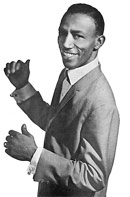
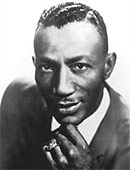
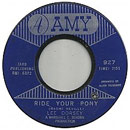
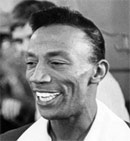
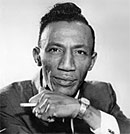
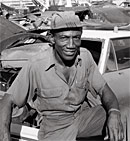
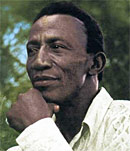
|
|
LEE DORSEY ALBUMS: |
|
Like many black artists of the 1960's, particularly those recording for smaller independent labels, Dorsey had relatively few opportunities to cut full length albums. Only two from his prime mid-sixties years emerged, but it was his fourth album at the dawn of the seventies, after his singles success had waned, that proved to be the keeper.
|
|
Ya-Ya
Capitalizing on the title song of this LP that topped the R&B Singles Chart, this is a typically haphazard album that was emblematic of its time. The two hit singles ("Do Re Mi" being the other) are the only essential tracks, though "Hoodlum Joe" is a quality effort as well. There's nothing objectionable about anything here, but he has yet to really find his groove and there’s little else that’s really memorable.
|
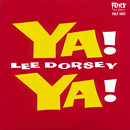 |
|
Ride Your Pony
By this point Dorsey's collaboration with songwriter/producer Allen Toussaint was hitting its stride and though also released quickly to take advantage of the title track's popularity the other selections here are of uniformly high quality and the CD bonus tracks include some of his more recognizable singles from the years that followed which did not appear on any Dorsey album at the time.
|
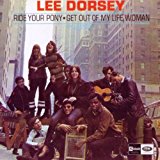
|
|
The New Lee Dorsey
Another stellar mid-60's LP from the Dorsey/Toussaint team, highlighted by two of Dorsey's biggest hits, but also containing a half dozen of his most cherished recordings, many of which were solid B-sides in their own right. This has been re-released on CD with eleven bonus tracks taken mostly from the period immediately following this 1966 release, as he went without a studio album until the start of the new decade four years later.
|
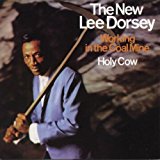
|
|
Yes We Can
A classic. Though it made little commercial impact and effectively ended his prime recording career when it fizzled on the market, the songs themselves proved to have enormous staying power. From "Yes We Can" (The Pointer Sisters) to "Sneaking Sally Through The Alley" (Robert Palmer), "Occapella" (Ringo Starr) to the emotional protest song "Freedom For The Stallion" (Elvis Costello), the material has been constantly revisited by other artists over the years and it remains possibly Dorsey's most consistent and impressive album.
|
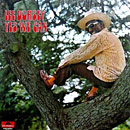
|
|
Night People
One last shot by Dorsey, now 52 years old, and Toussaint, the album got good reviews, with Time magazine naming it one of the year’s Ten Best, and the title track made the R&B Charts, marking his final appearance there, but it was only a bittersweet coda to his career. (NOTE: Raven Records has released his two seventies albums on a single disc which is the smartest buy for his last decade of recording).
|
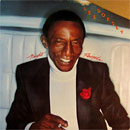
|
|
COMPILATIONS:
|
|
Wheelin' & Dealin'
Twenty tracks, not a bad one in the bunch, impossibly catchy with good notes. Though it concentrates strictly on his 60's material, that was his undisputed heyday and for years this was the best choice for appreciating Dorsey's charm.
|
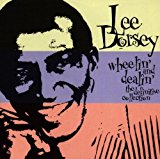
|
|
Holy Cow: The Very Best Of Lee Dorsey
This has overtaken "Wheelin' & Dealin'" as the best single disc collection of Dorsey on the market, as it includes the cream of his 70's work as well as his iconic 60's sides. As such it's the deepest overview of his entire career.
|
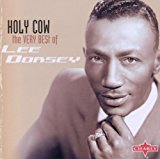
|
LEE DORSEY GREATEST SONGS:
|
|
|
1. Working In The Coalmine
2. Ya Ya
3. Ride Your Pony
4. Holy Cow
5. Get Out Of My Life Woman
6. Do-Re-Mi
7. Everything I Do Gohn Be Funky
8. Yes We Can
9. Go-Go Girl
10. Sneaking Sally Through The Alley
11. My Old Car
12. Freedom For The Stallion
13. Lottie Mo
14. Occapella
15. Work, Work, Work
16. Who's Gonna Help Brother Get Further?
17. Confusion
18. Can You Hear Me?
|
19. Riverboat
20. A Lover Was Born
21. Operation Heartache
22. Gotta Find A Job
23. Night People
24. O-Me-O My-O
25. Love Lots Of Lovin' (with Betty Harris)
26. Give It Up
27. Tears, Tears And More Tears
28. Candy Yam
29. I Can't Get Away
30. Hoodlum Joe
31. Four Corners
32. The Kitty Kat Song
33. A Little Dab A Do Ya
34. When Can I Come Home
35. Can I Be The One
|
|
|
|
QUOTES ON LEE DORSEY:
|
|
"Lee just inspires all kinds of ideas that no one else does. I can always see Lee moving through the world and me back there watching and writing about it" - Allen Toussaint, Rock 'n' Roll Hall of Fame songwriter/producer, on the source of one of his longest lasting partnerships.
"(Lee Dorsey's) 'Get Out Of My Life, Woman' is the first record that I really related to as being stanky funky" - George Clinton (Parliament/Funkadelic)
"I discovered everyone was into acid rock (and) I didn't want to be out of step (so) I tried to find somebody of that sort... someone weird (to listen to)... It's no different now - people trying to outdo each other in extremes. I saw the light when... I discovered that all the music that I liked secretly, that I'd been hiding from my friends - that was what was great fun... Lee Dorsey songs!" - Elvis Costello, on the core essentials of rock 'n' roll.
"We figured we could play Lee Dorsey songs better than anyone except Lee Dorsey" - Levon Helm, explaining one of the primary sources of The Band's unique sound.
"New Orleans' answer to 'Dancing In The Streets', an ominous rumble with Dorsey's raggedy shouts directing the dancers like traffic..." - Dave Marsh, on Dorsey's classic 1965 hit, "Ride Your Pony".
"Dorsey… makes it sound easy. The most sophisticated soul and funk of its time" - Steven Thomas Erlewine, All Music Guide
"The kind of man for whom the word 'dapper' was invented" - Robert Christgau, critic, on Dorsey's stage manner upon his opening for The Clash on tour in 1980.
"He was a beautiful person" - George Porter Jr., bassist for the Meters who backed Dorsey on most of his songs.
"I can see him, all hunched up, pounding it out and doing a little dance all at the same time. I'm waiting in the wings... just standing there in the dark... (and) I felt that thrill that they cross the world to find. I'm talking about Lee Dorsey, the hidden jewel of soul!" - Joe Strummer (The Clash), on seeing Dorsey as he opened for The Clash each night.
"Lee Dorsey was a special artist who always gave it his all... (with) some of the most uplifting and danceable music ever... A beautiful talent." - John McCord, writer/reviewer, Roots & Rhythm.com
"I never knew if I was a better body and fender man or a vocalist" - Lee Dorsey
|
|
PLACEMENT ON DDD LISTS (as of 04/2015):
|
|
100 Greatest Rock 'n' Roll Artists of The 1960s - #58
100 Greatest Underrated Rock Artists - #67
100 Greatest Songs of 1961 - #41. Ya Ya
100 Greatest Songs of 1966 - #72. Working In A Coal Mine
100 Greatest Car Songs - #91. My Old Car
100 Greatest Funk Songs - #103. Get Out of My Life, Woman
100 Greatest "Classic" R&B/Soul Songs - #110. Workin' In A Coal Mine
|
|
